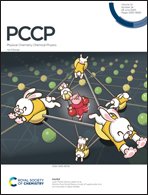Impurity scattering effects on the validity of Fermi liquid theory in topological crystalline insulator SnTe (001) thin films
Abstract
We study the electronic heat capacity (EHC) and the Pauli spin paramagnetic susceptibility (PSPS) of topological crystalline insulator SnTe (001) thin film in the presence of dilute charged impurities in an effective Hamiltonian model for the low-energy regime such as impurity concentration and impurity scattering potential effects. To calculate the EHC and PSPS using the Boltzmann method, we first calculate the electronic density of states by means of the Green's function approach. Also, the impurity effects are considered with the aid of the T-matrix approximation. We demonstrate that the hybridization potential between the front and back surfaces in SnTe (001) thin films leads to the band gap opening and to the zero PSPS at low temperatures obeying the Fermi liquid theory. In particular, we demonstrate two scenarios including the possibilities of the same and different impurity doping. It is shown that in both cases the midgap states emerge, the cation–anion symmetry breaks down and the Fermi liquid theory loses its validity. Moreover, the critical scattering potential with respect to the hybridization potential is found for the validity limit of the Fermi liquid theory. Finally, the Schottky anomaly and the crossover in EHC and PSPS, respectively, are discussed. Our results have strong implications for applications based on SnTe (001) thin films.



 Please wait while we load your content...
Please wait while we load your content...